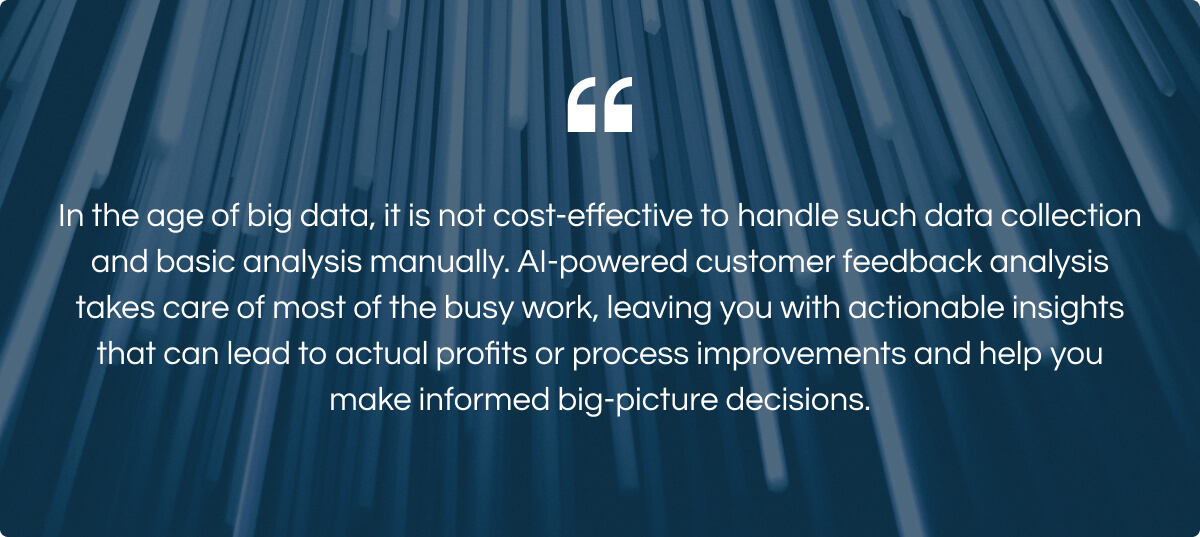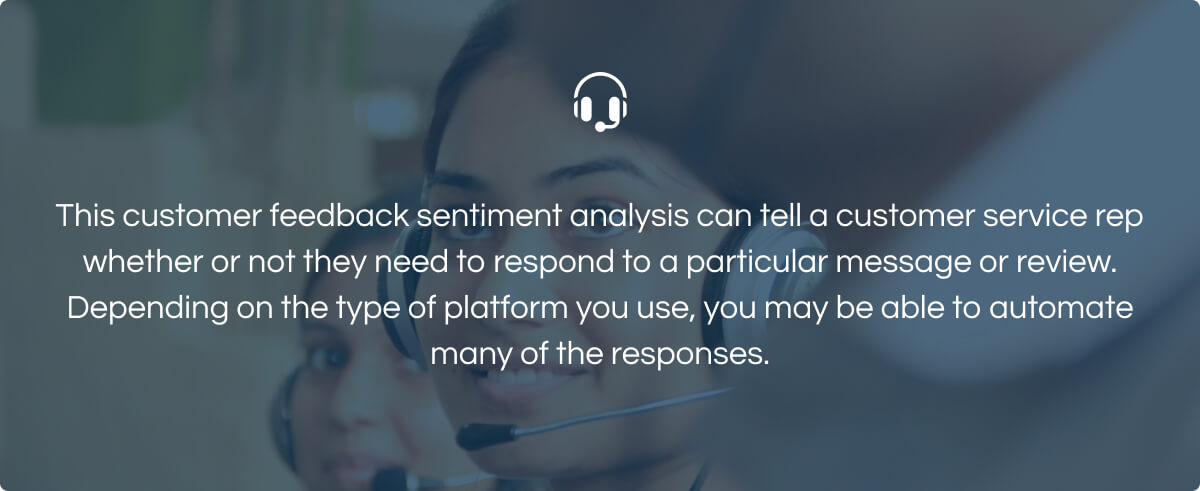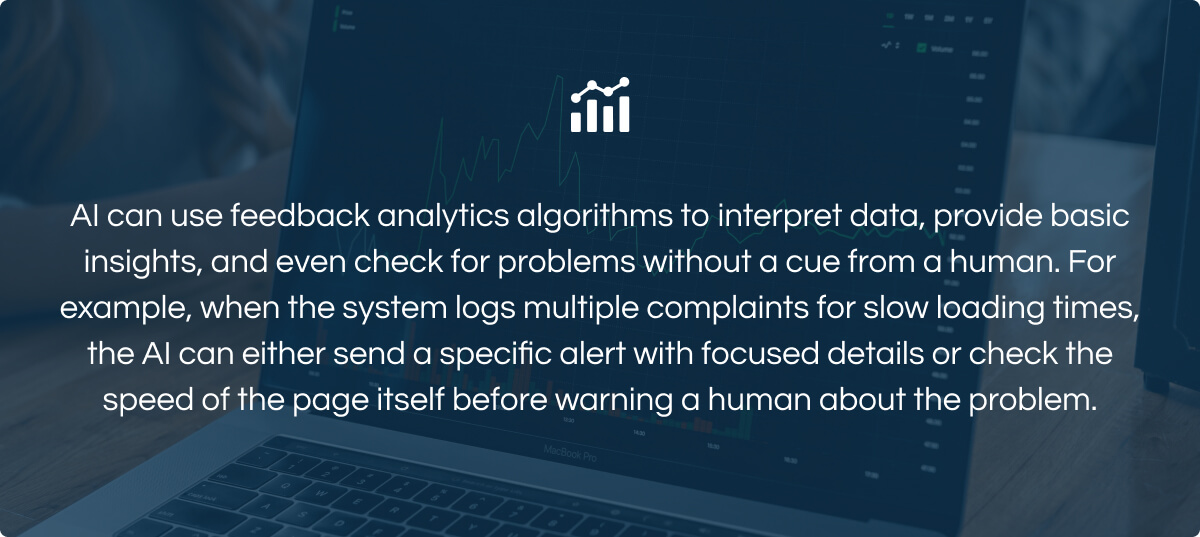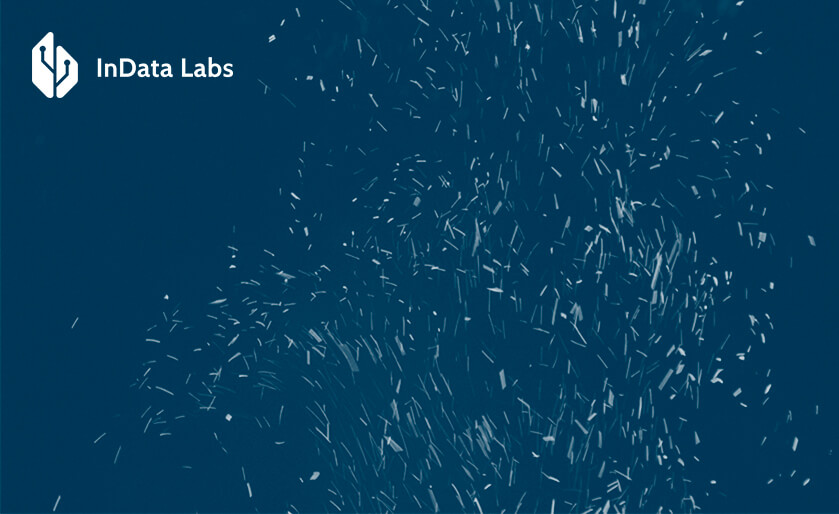AI makes headlines with robots and driverless cars. Data-related AI tools, like customer feedback analytics solutions and process automation, don’t get the same press coverage. However, they have become essential for businesses seeking to understand consumers and provide better, more efficient services.
Quick facts
The online retail industry provides an example of how AI solutions have become necessities for day-to-day business operations. A 2021 study by McKinsey and Company found that 71% of consumers expect a personalized experience when they shop online. An even larger percentage of people (76%) felt frustrated if they did not get individualized recommendations while on a retailer’s site.
How does AI help companies respond to this trend? One of the most noticeable uses involves real-time suggestions to online shoppers. Customer feedback analysis using machine learning automates the personalization process by collecting and analyzing past actions and using the resulting data to offer targeted offers and recommendations to website users.
This is an example of how AI works in modern online retailing, but customer feedback analytics goes far beyond offering a particular consumer their favorite brands. AI can power customer service interactions using chatbots and text analysis, clean and store activity and feedback data on customer relationship management (CRM) platforms, find mentions in comments sections and on social media, and provide follow-up communications after a purchase or complaint. A good AI-powered system can handle these tasks without much human oversight.

Here is a closer look at how customer feedback analytics solutions, paired with AI, can help your company grow and improve.
Text analysis tools
A customer feedback analytics tool that can interpret text is essential for any company that uses support tickets, chatbots, or online contact forms. Text analysis programs do much more than simply look for positive or negative keywords. They use artificial intelligence and sentiment-measuring models to gauge sentiment and decide if additional action or response is necessary.
The same tool can assess online reviews and social media posts to see if the overall impression of your products or services is positive or negative.

Source: Unsplash
How does this work? AI-powered text analysis looks at the frequency of certain words, sentence patterns and structure, and even punctuation. It takes this data and uses it to measure the overall sentiment of the text. Customer feedback analytics software with this capability usually tags each piece of text as positive, negative, or neutral. Some tools will even provide a score or percentage to measure the level of positivity or negativity.
Customer sentiment analysis technologies that handle text rely on something called natural language processing (NLP). This component of AI takes a text or document and breaks it down into data points that a computer can understand. After this translation, a modeling program can interpret the text and its emotion and categorize and score it in a way that is useful for the company.

Text analysis software services should be able to assess support tickets, contact forms, chatbots, online reviews, social media posts, and customer feedback surveys.
Chatbots
Chatbots rely on AI to improve customer experience (CX). These tools use NLP, data from customer relationship management platforms, and other information to automatically personalize interactions with customers.
With different information sources, interpreted instantly by AI, chatbots can provide an almost-human-like level of interaction. But do customers really want to talk to a bot?

Source: Unsplash
There are plenty of voices online that complain about AI tools such as chatbots making customer service less personal. However, studies have shown that these complaining consumers are in the minority.
Research by Zendesk found that the most important priority for 73% of customers who contact a company is a quick resolution to their problem. Meanwhile, 59% say a fast response to their query is necessary for a positive customer experience. These numbers point to a change in the expectations that consumers have in the data-driven digital era. The speed with which these problems get resolved is more important than the method.
How can chatbots help with these expectations? IBM found that chatbots can handle 80% of standard customer issues and questions without human intervention. This means that consumers do not have to wait for a human customer service rep to answer a message or pick up a phone. Chatbots can respond instantly to a query and solve a majority of issues quickly without forcing the customer to wait.
Also, chatbots automatically record the interaction. Additional AI tools can transfer the data to a CRM platform where it can help further personalize services or automate follow-up contact with the customer.
Chatbots use the same type of human-computer interactions as metaverse AI. Both make decisions based on real data inputs. In other words, these systems are making informed decisions based on the information available, which is, in some ways, a human-like approach to problem solving.
Categorizing and organizing data
Customer interactions and comments generate a huge amount of data. AI tools can exploit this wealth of information to improve customer service, but you can also use it to analyze operations, find and define issues, and measure the success of improvements, strategy changes, or marketing campaigns.
In addition to labeling interactions as positive, negative, or neutral, feedback analytics tools can place these insights or exchanges with customers into specific categories. This enables analysts to call up data on specific topics. For example, you could make a category for “website problems” that include complaints or comments about page load times, image quality, navigation issues, or other UI troubles.
A customer feedback analytics tool that can categorize data in this way is useful on several levels. First, it can offer a warning about potential issues. Occasional complaints about website load times, for example, may not be a sign of a problem. Some customers are unaware that their own internet connection, computer, or device is causing the slow loading times. However, if the number of customer interactions that AI puts in the website category spikes over a short timeframe, it could be a sign that there is indeed a problem on your end.
You can also create categories to help measure the effect of specific changes. To use the page load time example again, if you make improvements to speed up your site, you should see the number of negative interactions in the “website problem” category go down in the days and weeks after the improvement.
Data analysis
The more insights that customer feedback analytics applications can provide, the easier it is for human analysts to focus on solving problems, making forecasts, and perfecting strategies.

AI can also help provide detailed insights that can help address CX troubles. For example, perhaps an analytics tool finds that users with a specific browser are contacting customer support with problems, while those who rely on a different browser are not reporting issues with the same frequency.
Feedback analytics tools can make connections between data points and users in particular demographic groups. For example, AI may find that 18-to-24 year olds purchase a specific product with more frequency than other age groups.
Yes, a human analyst can find and interpret data to get the same insight. However, professional analysts could spend time working on more complex analyses instead of getting bogged down with these basic but labor-intensive tasks.
In this way, a customer feedback analysis tool can help the data science department work more efficiently and focus on high-level projects instead of time-consuming ones.
Forecasting problems before they occur
Customer feedback analytics apps focus on data collection and use after customer interactions, but artificial intelligence can also help companies avoid some issues by communicating with customers before the fact.

Source: Unsplash
It is impossible to forecast when a company will get hit with website server problems or which customer will receive a defective product, but you can provide early warning about some potential problems.
For example, AI can use shipping or weather data to predict delivery delays and automatically send a notification to the customer. Since they already know about the issue, they are less likely to contact customer service to inquire about the reason for the delay.
Data collection
Artificial intelligence can also aid in bringing customer feedback from separate sources into one central data warehouse. Useful information can come from online surveys or post-purchase questionnaires. AI systems can also collect information from product reviews, customer service chat interactions, and comments on blogs.
This type of data collection is time-consuming if performed manually, but assessing positive and negative online reviews is essential for every business that sells a product or service online. A recent study found that 89% of consumers read reviews before making a purchase, and 49% say that positive reviews are one of the three most important deciding factors in their decision to buy. This means that positive coverage is valuable for getting more purchases, and negative reviews can have a considerable impact on your bottom line.
With AI crawling the web to find customer feedback, putting it into relevant categories, and helping interpret its meaning, company analysts and decision-makers can focus on finding the reasons behind the negative reviews or feedback and taking steps to improve in those areas. They are free to do just that because AI handles the time-consuming busywork of basic feedback analytics.
Data visualization
Data science impacts business issues by offering new insights and solutions that would not be possible in previous generations. One of the biggest challenges for analysts, scientists, and statisticians who work in this field is translating their findings for people with less technical knowledge.
Can AI help with this issue? AI analytics tools can find and collect raw data, feed it into algorithms, and turn it into information that analysts and other specialists can understand and use. It can also help visualize this information so that data scientists can better communicate their findings with managers and decision-makers who do not have the same level of technical expertise.
Data visualization with graphs, charts, and organized tables, can help highlight trends, define outliers, and put the data in context for company stakeholders.
Customer feedback analytics tools that visualize data for users make it easier to populate their reports with graphics automatically instead of having to manually create tables and charts.

Source: Unsplash
What should businesses look for in customer feedback analytics apps?
Customer feedback analytics solutions should be customizable and handle the entire analytics process, from collecting data to organizing it to producing actionable insights that companies can use to improve customer experience, efficiency, and operations.
For example, if you want to measure customer sentiment in online reviews for your products, you would need a feedback analytics tool that could scrape data from various e-commerce sites where your products are sold and consumer review sites that publish content about your products.
Using text analysis tools, a feedback analysis app should then transform the data into a usable NPL form. This step involves removing filler words, unneeded punctuation, and other elements that are not necessary for analysis.
After this step, the text is ready for interpretation using various analysis models. Logistic Regression, Support Vector Machine (SVM), and Naïve Bayes models are some of the more popular options for discerning the sentiment of a document or text. A good customer feedback analytics system will let you choose which models you want to use.
The resulting data should help you track customer sentiment, get an overall feeling for your brand’s image in the global marketplace, and notice changes in customer sentiment. With AI covering all these aspects of feedback analysis, you are freed up to focus on finding out why consumer opinions have changed and how to make improvements to increase the positive-to-negative sentiment ratio.

Source: Unsplash
Importance of AI customer feedback analytics in today’s data-driven business world
In some cases, companies with very specific needs might require special guidance to configure or update their analytics systems or connect them to their CRM platforms for better functionality. Customer feedback analytics firms may be able to help with details of such a setup.
Smaller E-commerce companies may not have the database infrastructure to take advantage of these tools. Third-party customer feedback analytics consultants can handle the finer points of operating a system and analyzing the results.
There is no denying customer feedback analysis’ importance in today’s digital business environment. Those who embrace this trend can tap into insights that give them an edge in their industries and allow them to meet customer needs and expectations.
Author bio
Frankie Wallace is a freelance writer. She enjoys writing about trends in technology, data, and business, but occasionally goes back to her roots with socially active journalism. Frankie spends her free time gardening or off hiking in the mountains of the PNW with her loved ones.
Custom consumer sentiment solutions for your business
Looking for an experienced NLP solutions vendor to develop a customer feedback analytics solution, shedule a call with a team of experts to see how we can help.



